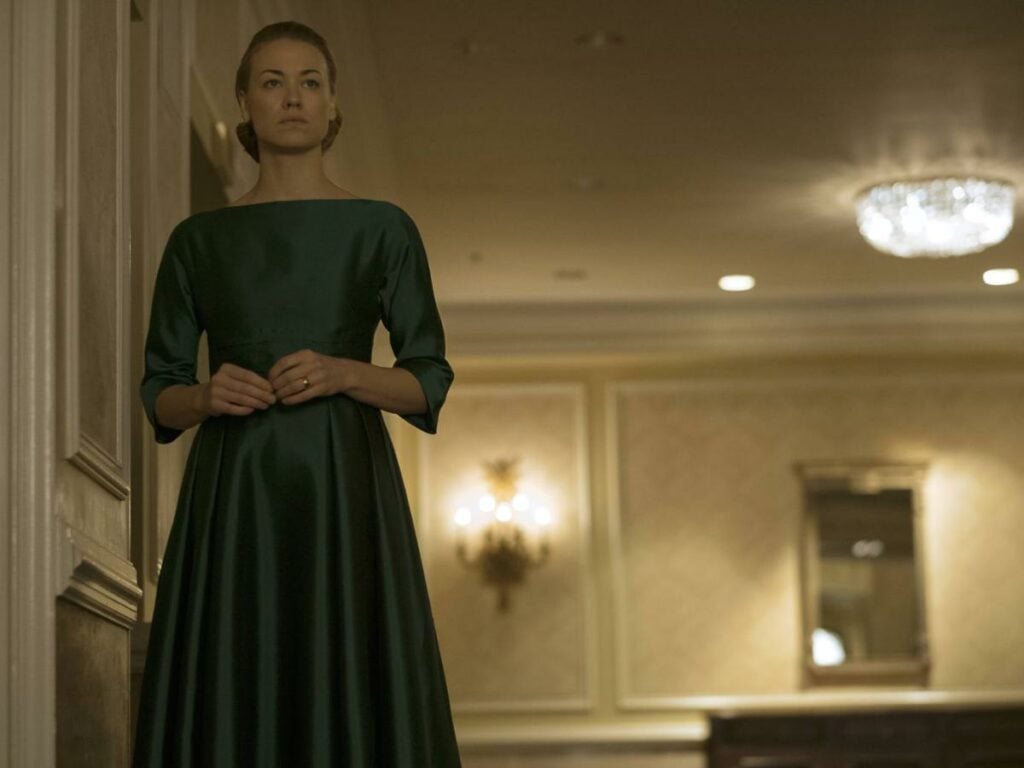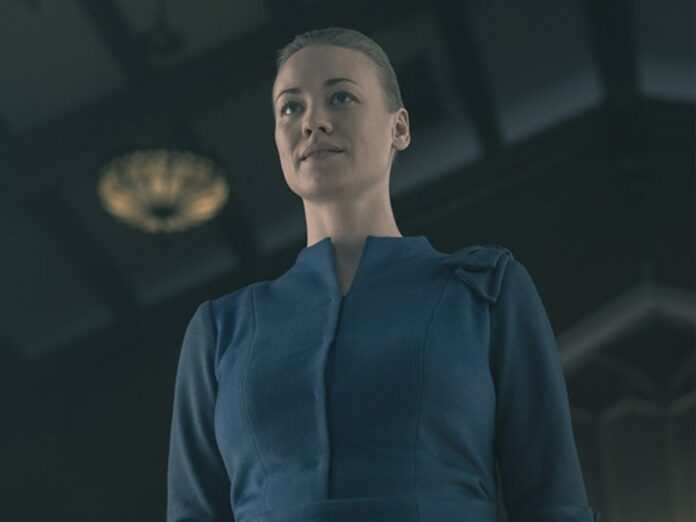In the crimson corridors of Gilead, there’s still some gray blending with the darker areas. Hulu’s critically acclaimed ‘The Handmaid’s Tale’s prominent figure Serena Joy is a character both captivating and confusing. As the architect of an oppressive and women-degrading new nation, Joy’s narrative weaves a tapestry of paradoxes. With moments baring her maternal soul that contrast starkly with those revealing her darkest depths, the question of her classification arises. Is she a complex antagonist or just another victim?
The conflict between Serena Joy’s individuality and her imprisonment in a self-constructed patriarchal maze is a fascinating examination of this complex character. So let’s nitpick the spotless and well-steamed teal cape of Mrs. Waterford by discussing some classifications we can put this character into.
The Calculated Antagonist

In the first dimension of Lady Waterford’s complexity, she strides through the narrative as a calculated antagonist wielding the new world like a double-edged sword. Her fingerprints are etched on the blueprint of Gilead, and her strategic position within the power structure cast shadows on the walls of oppression. Each move the golden lady makes is a chess piece on the board of subjugation.
Serena’s antagonistic side reveals a woman driven by conviction, unafraid to manipulate the strings of authority. This calculated agency of hers makes one question whether she is a villain of circumstance or the Frankenstein of this monstrosity. Now do we remember who the monster turned out to be at the end of Mary Shelley’s terror fantasy?
In case you missed: “Something Even More Challenging Than Handmaid’s”: Elisabeth Moss On Her New Spy Thriller Series ‘The Veil’
Shackled Victim Of Her Own Vision

Yet, beneath the veneer of authority lies a second dimension, one where Serena Joy is not the puppeteer but just the puppet. Her journey within Gilead gives us a tragic tale of a visionary ensnared by the very ideology she birthed. Stripped of the intellectual freedom that once defined her, Serena became a prisoner of the patriarchal prison world.
A world she helped construct just so she could feel the joy of being a mother. Further into the series, we see how Serena realizes the horrible reality she shacked herself and every woman walking the Gilead land in. It is in this vulnerability, this loss of self within the oppressive machinery, that the narrative starts to paint her gray.
In navigating the abyss of Serena Joy’s complexity, we are confronted with a character both darkly compelling and tragically nuanced. ‘The Handmaid’s Tale’s horrifying honesty on the extent of what the world is willing to go to as long as the only oppressed party is women shows us a terrifying tentative future.
With season five ending in June and Serena at a stroller’s length, we can anticipate more gray areas of Serena Joy’s psyche to come to light. For when it comes to black, Mrs. Waterford definitely had some.
You might also like to read:






